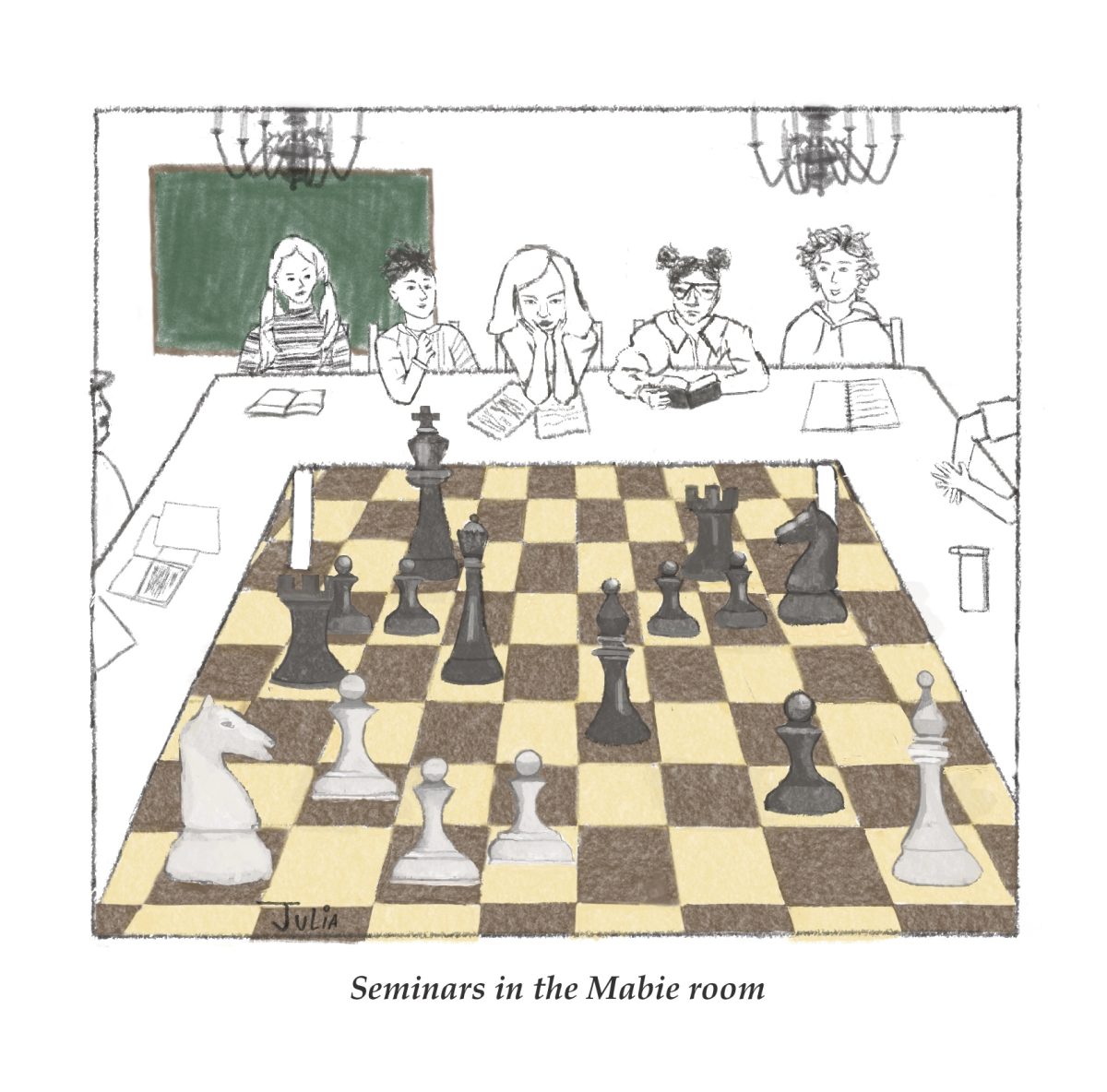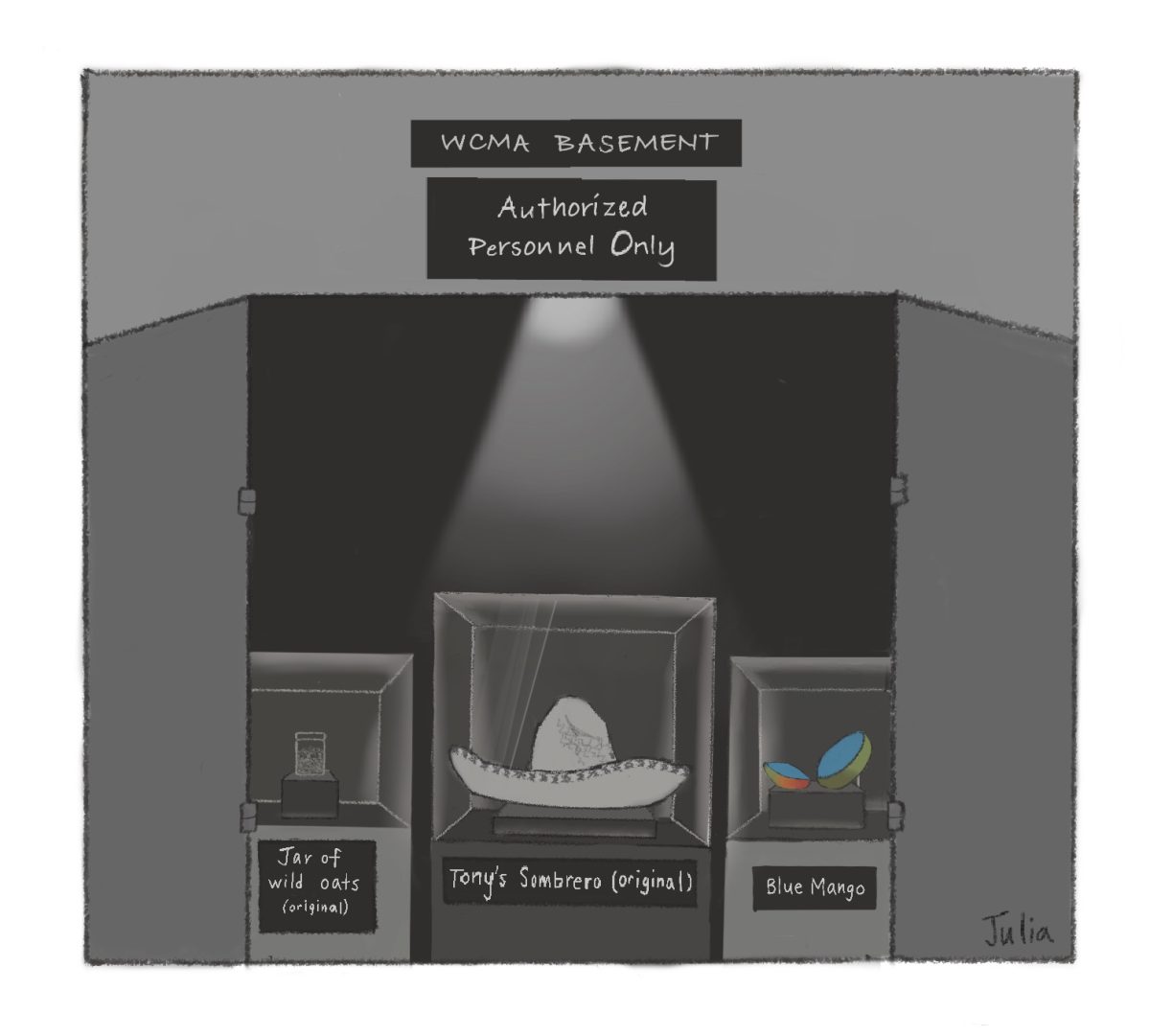The College needs to prioritize student-run performing arts
January 25, 2023
The College has nine a cappella groups. Of the 152 listed Registered Student Organizations (RSOs) on campus, 28 are performance groups. Our dance groups, like Nothin’ But Cuties, Sankofa Step Team, and Ritmo Latino, are some of the most popular clubs on campus, drawing huge crowds to their performances. The College is also home to the oldest continuously-running collegiate theater club in the country, Cap & Bells, which puts on around three shows a semester. Despite the large demand for and participation in student-run performing arts groups on campus, students at the top liberal arts college in the country consistently perform in empty classrooms and dorm basements. To say it is a shame that these groups are constantly fighting over the coveted stage in the building that houses a student-run café is a gross understatement. The arts are a fundamental aspect of what it means to be at a liberal arts college. Yet, in my experience as a member of Ephoria and Cap & Bells, the difficulty we have in securing performance and rehearsal spaces as well as other resources such as costumes, props, sets, building materials, and technical equipment, is inexcusable.
The greater problem lies not with a lack of support for arts at the College, but rather a lack of support for student-run artistic endeavors. In fact, much of the pushback we experience comes from the academic departments in the arts. This is not a new issue — students at the College have had this problem for decades. In a 2002 article in the Record, Cap & Bells was already protesting the same issue of lack of space. When the ’62 Center for Theatre and Dance and Paresky Center were being built, Cap & Bells asked for more space and was denied for both new buildings. Even then, the Cap & Bells president said the group was “bursting at the seams.” We are still in the same position two decades later. In the original plan for the ’62 Center, one of its spaces, the Adams Memorial Theatre, was supposed to be left to Cap & Bells. Instead, we got a singular storage closet. While student groups are only allowed to put on one performance per semester in the ’62 Center (and have little say in which space they can use), the music department has not seen a cappella or theatre concerts run by students on the stages of Chapin Hall or the Brooks-Rodgers Recital Hall in years, spaces that could easily serve as an upgrade from Griffin 3.
This is not to dismiss the amazing administrators and faculty members who have made efforts to support student groups. There are many in the Office of Campus Life and others in academic departments who do make a difference in helping student-run performance groups. However, their support has not been enough to counter the pushback we still feel. One issue, as we understand it, is simply scheduling conflicts. When our shows don’t conflict with the ’62 Center and other buildings, we are allowed to use those spaces. However, these spaces are often booked for department shows, which get priority in many College buildings, and leave student performance groups without spaces. Regardless, it is clear that students feel unsupported.
As the treasurer of Cap & Bells, I have seen the lack of resource-sharing on this campus. In the fall semester, we had to request money from Facilitators for Allocating Student Taxes (FAST) for six wireless body microphones for our inventory. After submitting the request, FAST asked why we were buying our own lavalier microphones when we could simply borrow from the ’62 Center. My response: We couldn’t. The department will not share their microphones with us; if they did, we would have been using them in our shows already.
This school has produced many of the greats of theatre — including the Broadway titan Stephen Sondheim, as well as William Finn, who wrote Falsettos and The 25th Annual Putnam County Spelling Bee. Cap & Bells is so established that The New York Times used to write about our board elections. Considering that Sondheim produced his first musical through Cap & Bells, our production quality should not be limited by our lack of prioritization and support from this institution. Even Sondheim was frustrated by the lack of resources for student-run theatre on campus, evident in a letter he wrote to his mentor Oscar Hammerstein that Lin-Manuel Miranda posted on Instagram. How can we as a school expect to continue to produce such stars of the arts if student-driven arts are not given the resources they need?
I’ve been lucky to have the opportunity to act in a Cap & Bells production in the ’62 Center. My latest show was in Center Stage, and it was a beautiful space that we were grateful to have been allowed to use. However, this simply isn’t enough for the huge demand that this impressively creative campus needs. It is unfair to ask students who have worked hard and passionately on their works to hold a play in a PSYC 101 classroom. We need to cut the red tape.
The recently unveiled campus plan, as well as other campus changes moving forward, offers us an opportunity. The Williams College Museum of Art announced that it will move out of Lawrence Hall — the perfect chance to create a space for integrated arts on campus. Lawrence Hall could serve as an ideal space for student groups to rehearse and perform, while integrating all fields of the arts. Regardless, this is a large and decades-old issue that needs to be solved holistically in order to accommodate for all the needs of space, equipment, and other resources. If the College does not start working more with its student-run performance groups, then I fear that the plays in classrooms and a cappella concerts in basements will persist.
I hope that in 20 years, a student in Cap & Bells will not be writing yet another op-ed due to a lack of resources and space.
Shoshie Hemley ’25 is from Iowa City, Iowa.








